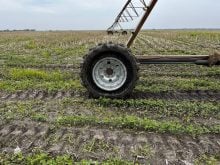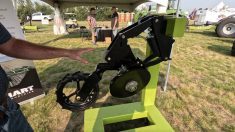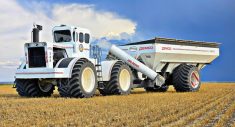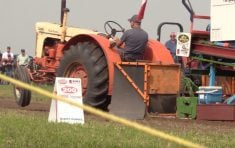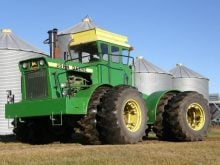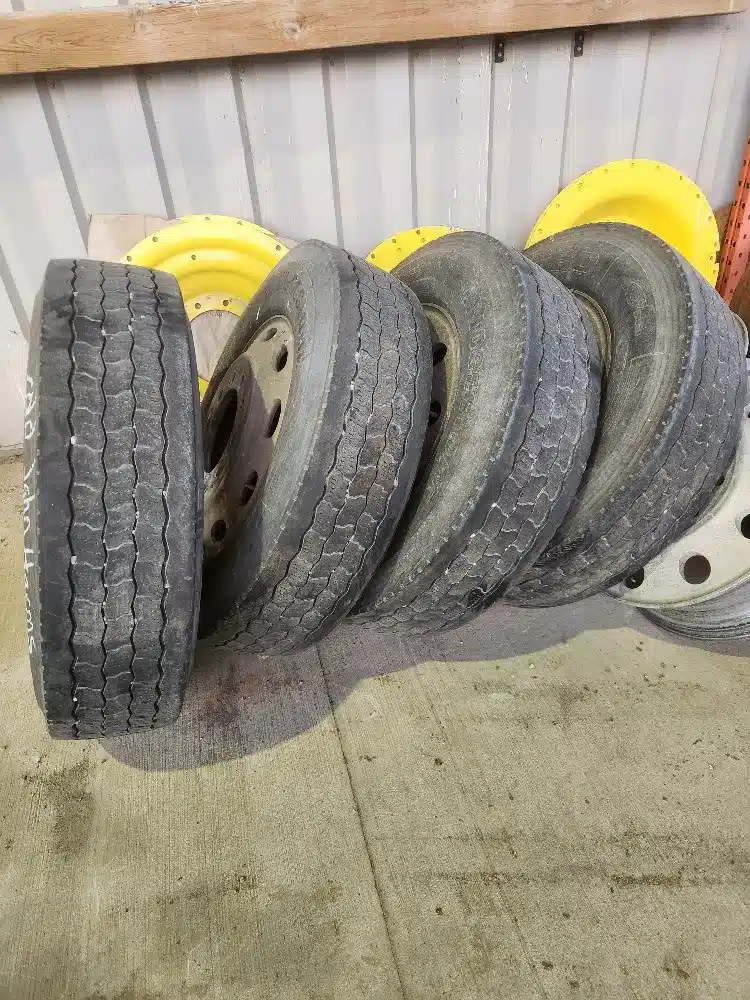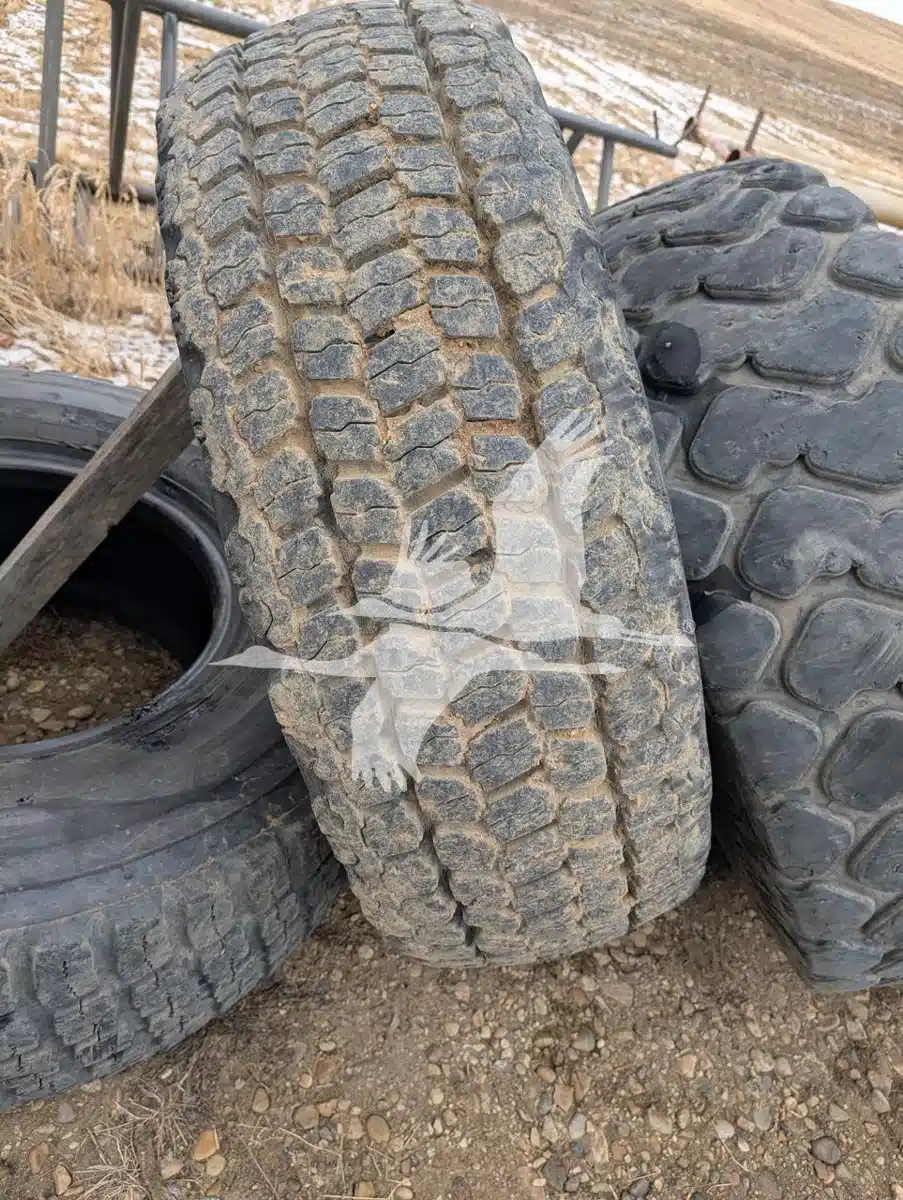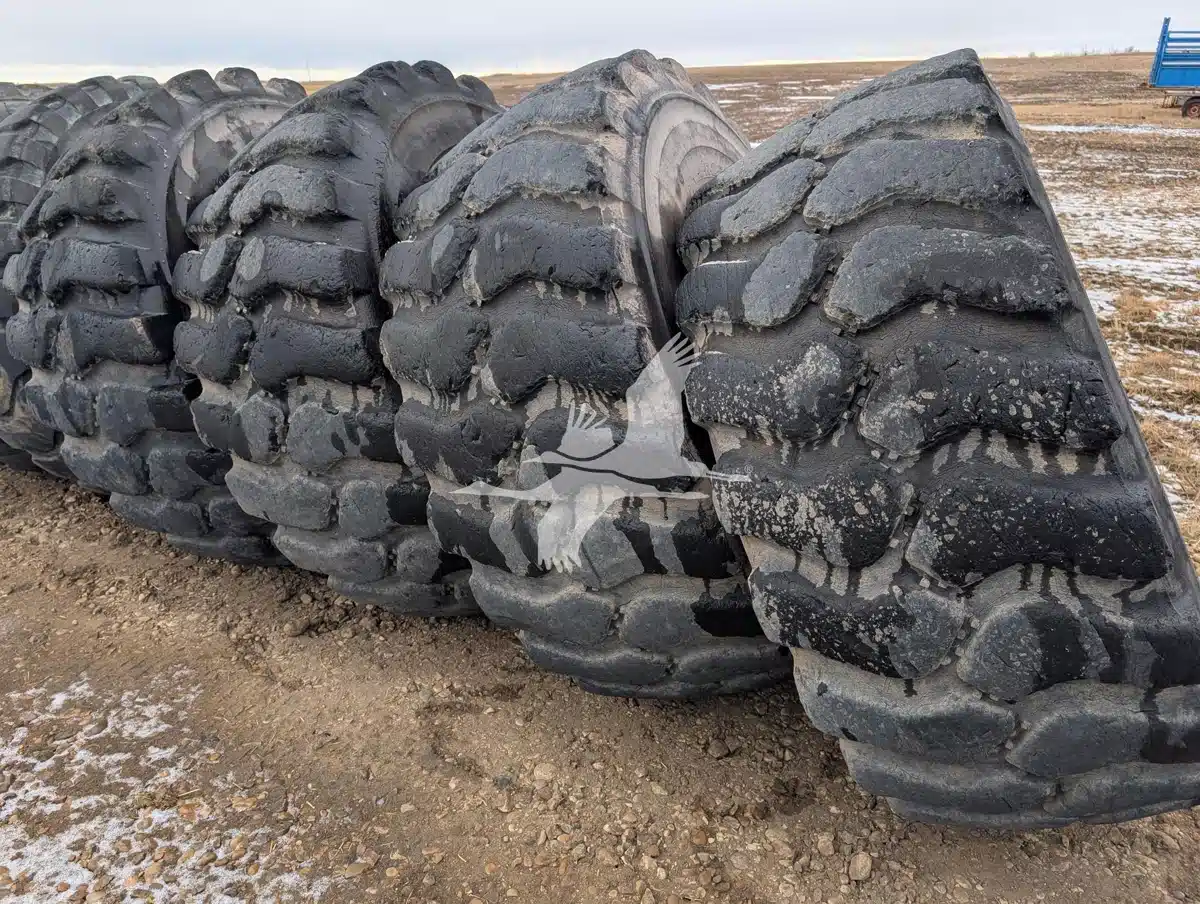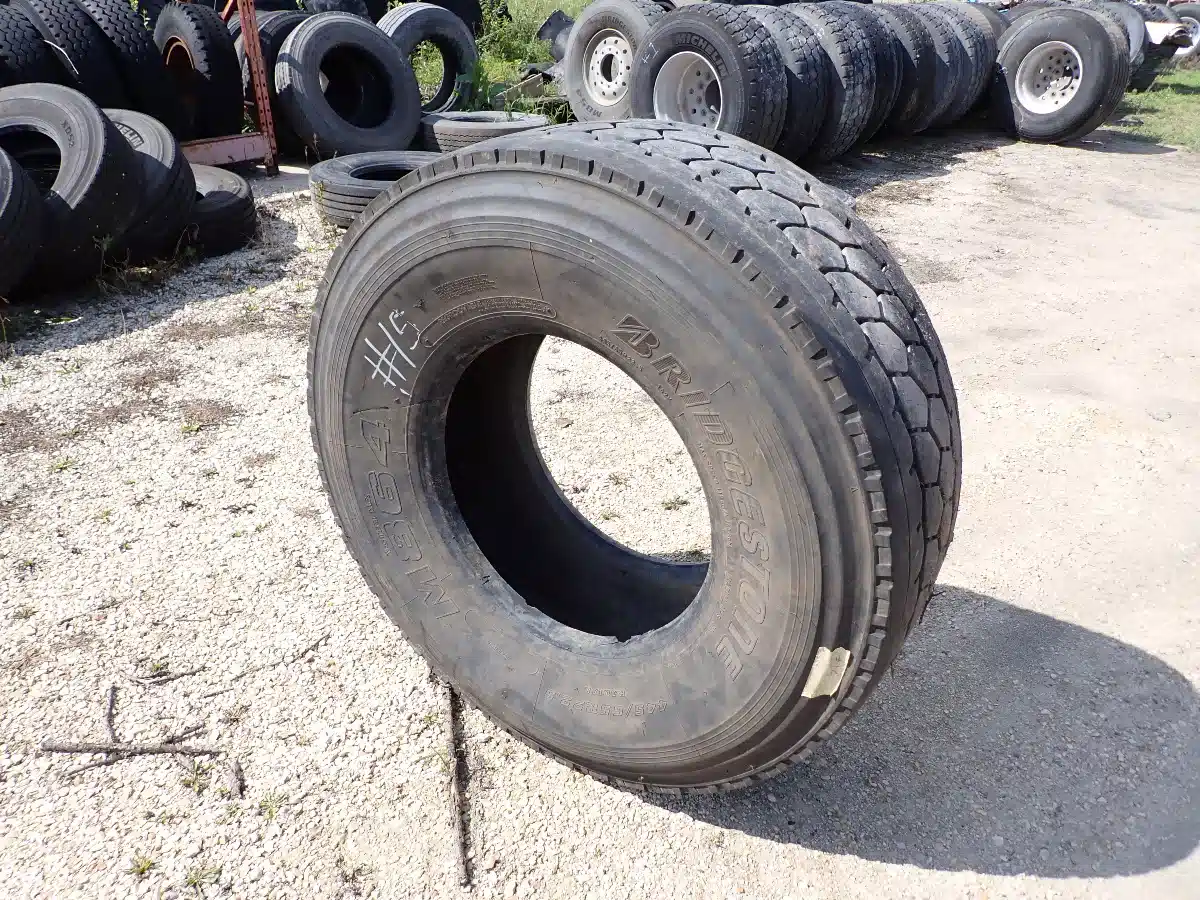In May of 1988 Bridgestone acquired Firestone. Since then the company’s ag tire line has continued on carrying the Firestone brand name, at least here in North America.
In late August, though, the company launched its first Bridgestone-branded ag tire line on these shores.
“In North America, historically, everything in our business has been Firestone-branded, so this is the first introduction into Bridgestone here in the North American market,” says Bridgestone’s ag product strategy manager Bill Durivage. “Bridgestone as a brand in the agricultural market has been available in Europe.”
Read Also
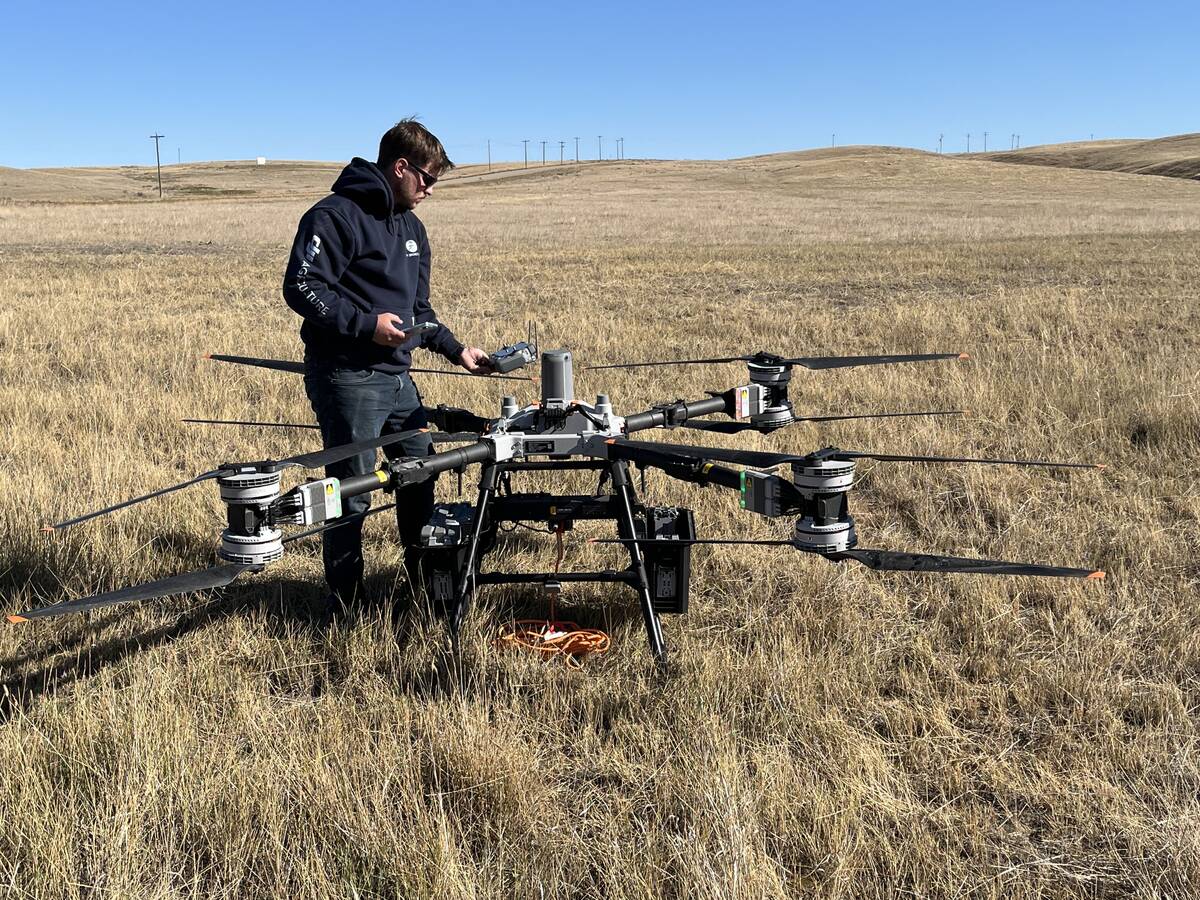
Farm-facing drone does the heavy lifting
Canadian distributor DJI Agriculture unveils its AGRAS T100 drone to western Canada’s producers for greater efficiencies in spraying and granular spreading in fields.
The first Bridgestone tractor tires to hit the market here aren’t just the same shoes with a different polish; rather, the three tire lines, which include the VT-Tractor, VX-Tractor and VX-R Tractor, introduce some new design features to the company’s North American lineup.
With many North American machines now spending more time on the road as farm sizes grow, that gives them something in common with their European counterparts.
READ MORE: Tires versus tracks: separating fact from fiction
The VT line was actually created a decade ago to handle the high number of road miles put on tractors by European farmers. Bridgestone thinks at least some North American farmers could now also benefit from that technology.
“The first VT line was actually launched in 2014,” Durivage says. “The European team created this design to capture the needs of the European market where you have a lot more roading. Wear life and ride comfort are much more critical in that market.
“Here, as farms are getting bigger and bigger, you’re seeing a lot more roading, field to field. So with the Bridgestone lineup they had over in Europe, it was designed with that in mind with a better wearing compound, improved lug design, more robust lugs. So we were able to leverage those products as part of our new global integration and bring those products here to North America.”
The VT tires use the industry’s VF (Very High Flexion) technology, allowing up to 40 per cent more load capacity with the same inflation pressures as a standard radial. Or inflation pressure can be reduced to create a much larger footprint to minimize compaction while improving traction by limiting wheel slip.
“It also has the improved pattern performance, in terms of the overlapping lugs for ride comfort and more lug volume for better wear performance, better wear compound,” Durivage says.
“On all of them we put what’s called the triple defence compound. It protects against stubble damage, improves wear life and enhances the durability.
“What we see in our testing with the extra lug volume and the improved tread compound, we actually delivered 45 per cent more wear life than the Michelin MachXBib, which is the benchmark we’ve been targeting against.”
A key design feature is what the company calls the “involute” tread pattern, which uses a convex face on the lugs. That provides more surface area to contact the soil and allows the lug to lift out of the ground without pushing dirt rearward, significantly reducing rolling resistance.
“It’s essentially a curved face on the front edge of the lug,” Durivage says. “Basically it increases the surface area of the lug as it comes into the soil. When it’s time for the lug to come out of the soil, instead of kicking the dirt as it comes out, it rolls and kind of lifts.
“If you have a sharp straight face, you’re essentially lifting out soil as it comes out. That adds more resistance to the drive traction of the tire itself. It’s basically energy loss.”

The VX and VX-R are standard radial tires rather than VF, but they share the same design features as the VT, although with a deeper tread lug.
“The big improvement is they have a very robust lug design,” he says. “We have up to 20 per cent more lug volume than the competitors.
“VT and VX are designed for high-horsepower tractors, and VX-R is designed for lower-horsepower tractors, kind of the little brother of the two. It has the same design features, but it’s available in smaller sizes.
“The key differentiating feature for the VX-R is the ultra-wide design. The tread width is the same dimension as the nominal section width of the tire. Because these tires are smaller they have less tread volume compared to a larger higher-horsepower tractor tire. So we maximized the width of that tread arc to get more rubber into the tread itself to improve wear life.”
The new Bridgestone tires will be available through existing Firestone dealers.
“Firestone will still be the bread and butter of our business, and it works for most North American farmers,” Durivage says. “But for those operations trying to get a little bit more life out of the tires because they do a lot more roading and things like that, we’ll have this Bridgestone solution for them.”




